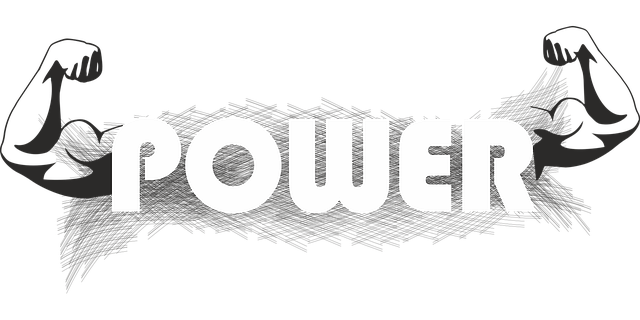Botox for muscle spasms, particularly cervical dystonia, offers a non-surgical, minimally invasive treatment. By injecting botulinum toxin into overactive neck muscles, healthcare professionals temporarily paralyze them, reducing spasms and stiffness, alleviating pain, and improving head mobility. This fast-acting procedure provides significant relief with minimal recovery time, making it a preferred solution for chronic neck conditions. While carrying rare risks like difficulty swallowing or breathing, Botox has proven effective through clinical studies, significantly enhancing patients' quality of life.
“Experience lasting relief from cervical dystonia’s debilitating neck spasms and stiffness with Botox—a non-surgical treatment option that has transformed lives. This comprehensive guide delves into the intricate world of Botox as a powerful tool for managing muscle spasms. From understanding the symptoms of this often-misunderstood condition to exploring the science behind Botox’s efficacy, we’ll navigate the benefits, risks, and recovery process. Discover how this innovative approach offers a new lease on life for those seeking freedom from chronic neck tension.”
Understanding Cervical Dystonia and its Symptoms
Cervical dystonia is a neurological disorder characterized by involuntary spasms and stiffness in the neck muscles. This condition can lead to painful and awkward head positions, affecting daily activities and quality of life. The symptoms typically include chronic neck pain, headaches, and difficulty turning or maintaining certain head postures. Patients often experience rigidity in their necks, with muscle contractions causing the head to twist or tilt involuntarily.
Botox for muscle spasms has emerged as a effective treatment option for cervical dystonia. By injecting Botox into specific neck muscles, healthcare professionals can temporarily paralyze them, reducing the frequency and intensity of spasms. This minimally invasive procedure offers significant relief from neck pain and stiffness, allowing patients to regain control over their head movements and improve their overall mobility.
Botox: A Non-Surgical Approach for Treatment
Botox offers a non-surgical approach to treating cervical dystonia, providing relief from persistent neck muscle spasms and stiffness. This therapeutic injection directly targets overactive nerve endings, temporarily paralyzing the affected muscles. By relaxing these spasmed muscles, Botox can significantly reduce the symptoms associated with this condition, offering patients a more comfortable and functional lifestyle.
As a minimally invasive procedure, Botox treatment for cervical dystonia is often preferred by those seeking alternative solutions to surgical interventions. It provides fast-acting relief, allowing individuals to experience improved mobility and reduced pain without lengthy recovery times. This non-surgical method offers a safe and effective way to manage muscle spasms, making it an appealing option for many patients considering their treatment options.
The Science Behind Botox for Muscle Spasms
Botox, a protein derived from bacteria, has been revolutionizing the treatment of muscle spasms, including cervical dystonia. Its mechanism of action involves blocking the release of acetylcholine, a neurotransmitter responsible for muscle contractions. When injected into affected muscles, Botox relaxes them, thereby reducing neck spasms and stiffness.
This minimally invasive procedure offers a temporary yet effective solution. Over time, the botulinum toxin binds to muscle receptors, preventing excessive nerve signals that lead to spasms. Numerous clinical studies have proven its efficacy in managing cervical dystonia symptoms, providing patients with much-needed relief and improving their quality of life.
Benefits, Risks, and Recovery Process
Botox for cervical dystonia offers a promising solution for individuals suffering from persistent neck spasms and stiffness caused by muscle imbalances. The procedure involves injecting botulinum toxin into specific muscles to relax them, thereby reducing unwanted contractions and alleviating pain. One of the key benefits is its ability to provide long-lasting relief, often with only occasional treatments needed over time. This non-invasive approach is particularly appealing as it offers an alternative to surgery for those seeking a more conservative method to manage their symptoms.
While Botox for muscle spasms has shown remarkable effectiveness, it’s not without potential risks. Temporary side effects may include bruising, swelling, or headaches at the injection sites. In rare cases, complications might arise, such as difficulty swallowing or breathing, requiring prompt medical attention. It’s crucial to weigh these considerations and discuss them with a qualified healthcare professional before proceeding with treatment. The recovery process is typically quick; patients can resume their regular activities soon after the procedure, though mild discomfort or sensitivity may persist for a few days.
Botox has emerged as a highly effective non-surgical option for managing cervical dystonia, offering significant relief from chronic neck spasms and stiffness. By relaxing overactive muscles, Botox can substantially improve quality of life, allowing individuals to move more freely and reduce the visible signs of tension. While risks and side effects do exist, the benefits outweigh these concerns for many patients. Understanding both the science behind its effectiveness and the recovery process is essential for anyone considering this treatment option for muscle spasms related to cervical dystonia.
